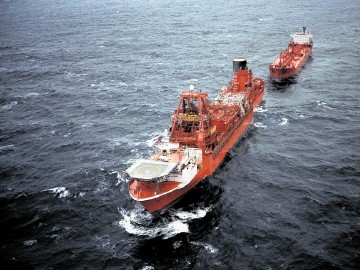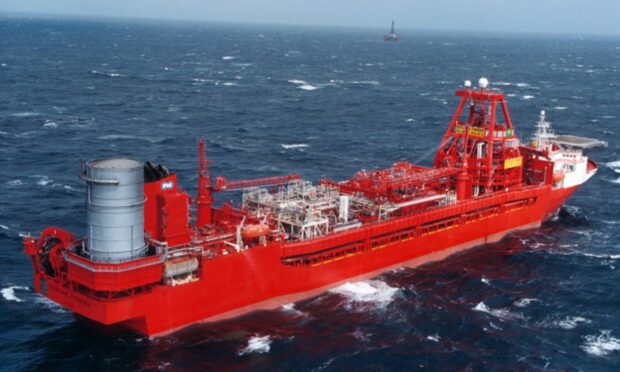There are growing concerns another major UK North Sea decommissioning project is heading overseas.
Floating production storage and offloading (FPSO) vessel Petrojarl Foinaven was recently sold by shipping company Teekay to an unnamed buyer.
Having completed work on BP’s Foinaven fields west of Shetland, the FPSO was recently moved to Hunterston on Scotland’s west coast to demobilise and remove BP signage.
Its future is now uncertain and it is feared it may become the latest in a string of lost opportunities for major decommissioning projects to stay in Scotland or at least the UK.
Destination unknown
Gary Cook, senior organiser for the GMB union in Scotland, said: “We are keen to hear from the industry where the final destination of the Foinaven will be, but the likelihood is it’ll be anywhere but Scotland.
“GMB has been clear that North Sea decommissioning should be a thriving domestic industry, yet the rest of the world largely delivers the dismantling of its redundant infrastructure.
“That’s because there was a basic failure to plan for inevitable on the part of government and industry.”
North Sea decommissioning should be a thriving domestic industry.”
Gary Cook, GMB.
Bermuda-headquartered Teekay was asked to confirm the buyer of the Foinaven FPSO but did not respond.
Firms seeking to decommission FPSOs overseas must first make a request to the Scottish Environmental Protection Agency (Sepa) for them to leave UK waters. Sepa said it had received no such request for Foinaven.
Mr Cook said: “Many of the platforms, rigs and vessels that have delivered decades of production were built in Scotland, and they could have been brought back to these shores for environmentally efficient and safe decommissioning.
“We could be redistributing the costs of that clean-up back into working-class and rural communities, supporting thousands of jobs in doing so, but we aren’t anywhere near that scale, which means decommissioning represents another missed industrial opportunity.”

Decommissioning in Scotland
In a 2016 report GMB listed several sites across Scotland that can handle decommissioning jobs to various degrees. Port of Dundee was singled out in the report’s conclusion as “it has most of the components required to be ‘decommissioning ready’”.
Dundee is the most northerly port owned by Forth Ports Authority and one of the largest contributors to the local economy on Tayside.
The 2016 report said Dundee should benchmark itself against the “world-class” Vats facility in Norway.
But Dundee has its drawbacks – the local road and rail infrastructure needs to be upgraded and modified, which could stimulate businesses located close to the port.
Nigg Energy Park’s credentials
Dundee also has shallower water, a smaller quayside and much less space than Nigg Energy Park (NEP) in the Highlands.
NEP has a site covering more than 7.5 million sq ft 700,000, including a 323,000sq ft fabrication facility.
This country does have the capacity for some major decommissioning projects, but Scottish firms are often outbid by foreign rivals – leading to more rigs and vessels being taken overseas and decommissioned.
Last week the jacket from the Brae Bravo platform was taken to Vats for recycling, following the same route of the final journey of the main platform topsides last year.

Conversation